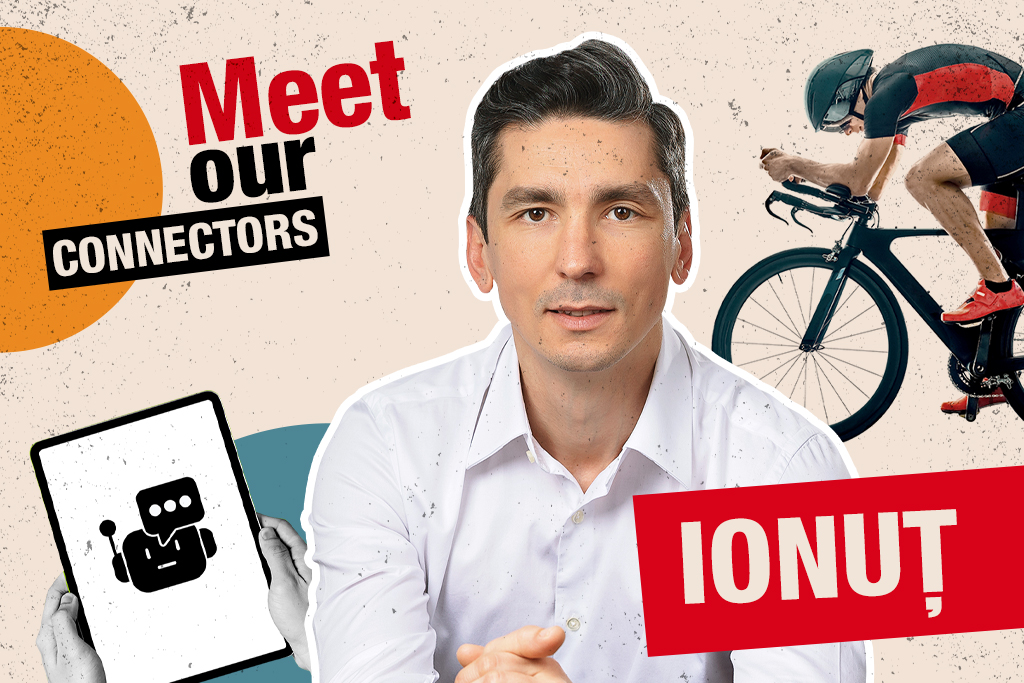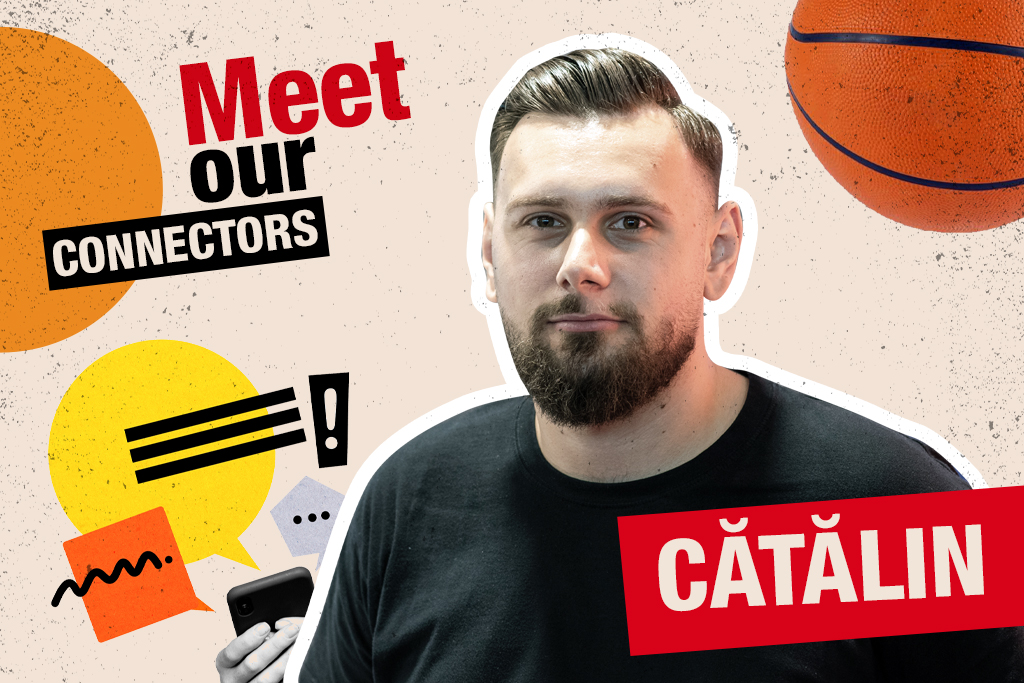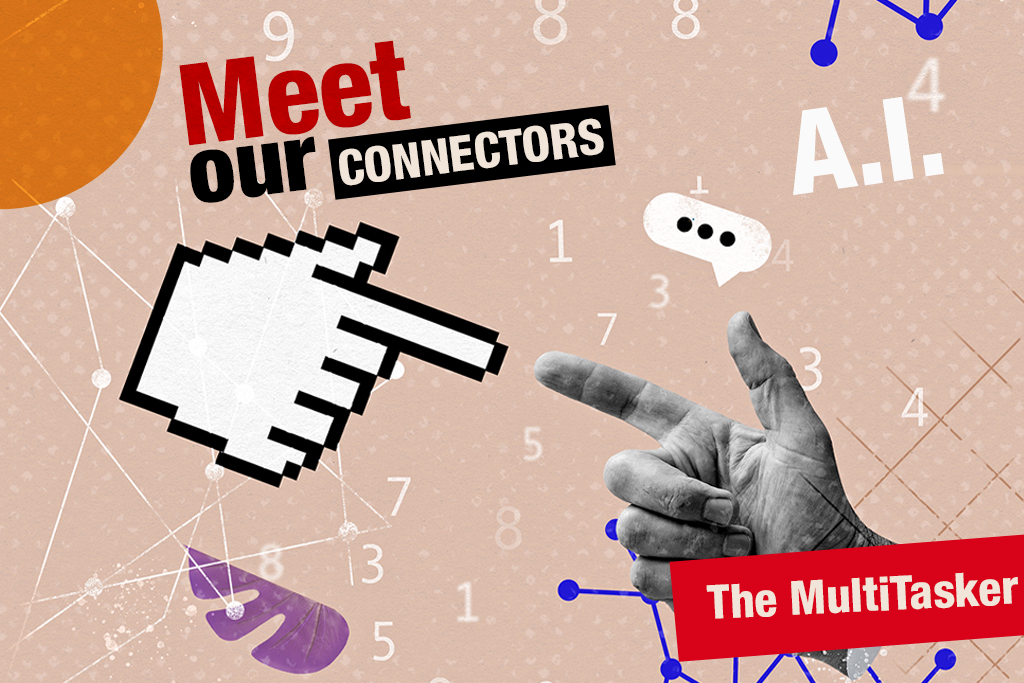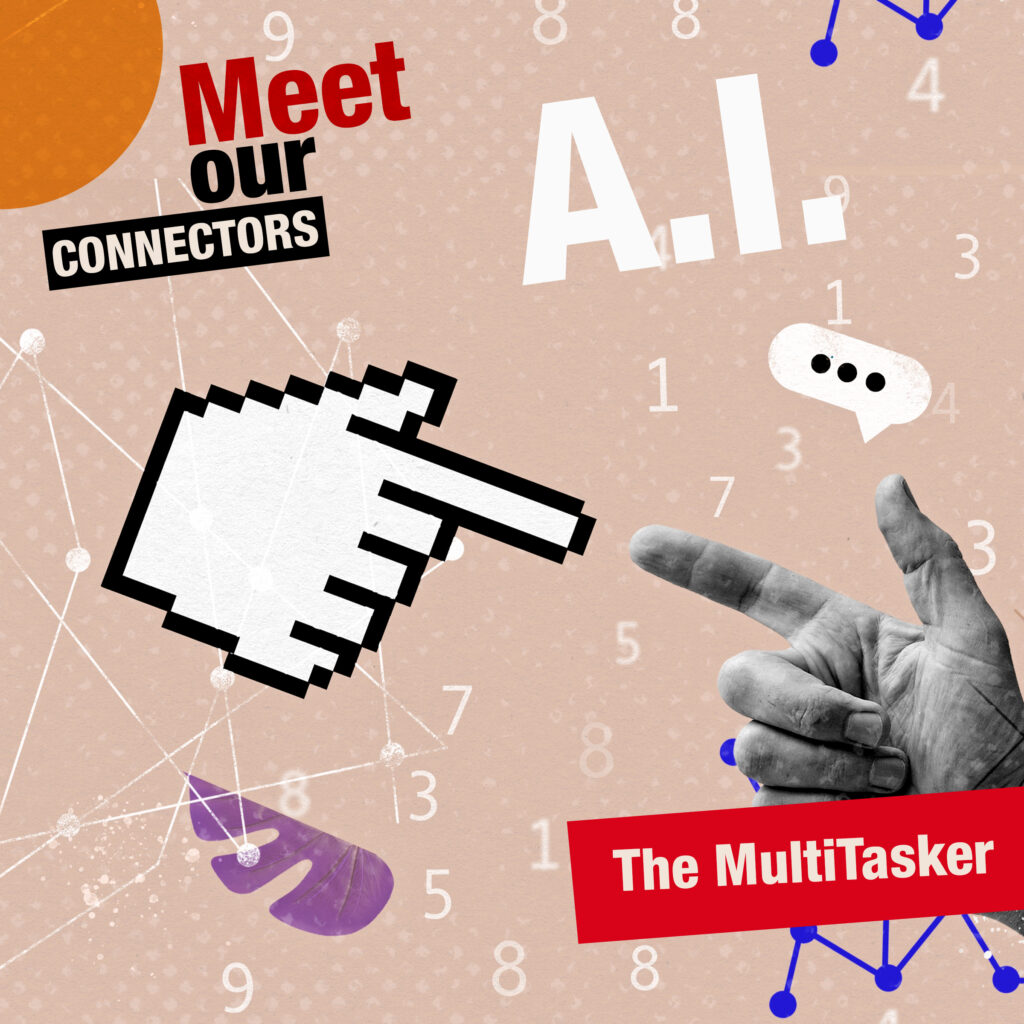
In every team there is a person who prefers to keep quiet, to listen, to extract information and then put it into practice, without too much discussion. In our case, that’s Ionuț Stănescu, who, in the almost two decades he’s been part of the team, has listened, evolved, helped train new IT talent, delivered complex solutions and put brick upon brick to Connections’ growth. Now, he holds the role of AI Expert & Data Scientist.
Ionuț is curious, so he’s always exploring new technologies and solutions, adapting, and in doing so, he manages to keep up with the changes in the industry and shows perseverance. This perseverance “keeps me going, even when I face challenges,” he says. Both in IT and in sporting events – we say – because Ionuț is a dedicated sportsman, taking part in competitions and triathlons. Deeply enthralled and engaged in the fast-paced development of Big Data and Artificial Intelligence, Ionuț is doing his best to keep up.
“This emerging sector, with its potential to revolutionize different industries and aspects of our lives, has managed to arouse intense interest and deep passion on my part. I’m excited to delve deeper into this field and contribute to the innovation that is happening now.”
From 2007, when he was still in college, to the present, Ionut has been part of the Connections team. Throughout these years he has been involved in numerous projects and has been the one to listen, assimilate information and then put it into practice.
“I became part of the Connections team in 2007, during my university studies. Since then, I have been constantly evolving, working on innovative projects and learning a lot from colleagues, professionals, clients and various projects. I’ve always taken responsibility for technical decisions, set the direction and acted proactively or reactively – depending on the situation – to remove possible obstacles. With this way of working, I participated in the development and delivery of complex solutions, contributed to the training of new IT talent, and I hope I played an important role in Connections’ rise.”
About digitization and physics
After 17 years of extracting valuable lessons from every action, of always approaching every project and every situation from a forward-looking perspective, Ionuț has fully understood what digitization means and sees it as… an element of physics, more precisely, light.
“Like light, digitization can reach the farthest corners of the world, bringing clarity, removing information barriers and bringing knowledge. Light has a dual behavior, behaving both as electromagnetic waves and as packets of energy (photons). Similarly, digitization also has a dual behavior. It can be a tool for development and learning as well as a medium for entertainment and relaxation. Light is also composed of many colors, each with its own wavelength. Similarly, digitization is composed of many different elements – data, software, hardware, networks, people, knowledge – all working together to create a complex system. Digitization, like light, is essentially good, but it can also be used maliciously. For example, in the case of light, ultraviolet radiation can cause sunburn and other health problems), and digitization, in its essence, is a good thing. Digitization on the other hand can be used in the case of cyber-attacks or invasion of privacy. Both are highly adaptable: while one adapts to its environment, the other adjusts to new technologies and trends, overcoming obstacles and always moving forward, and both transmit information extremely fast! And last but not least, they are both so necessary! Just as the physical world needs light to function, the modern world needs digitalization. Without it, many of our daily activities, such as communicating, working, learning and entertaining, would be much more difficult, if not impossible.”
Message for a beginner programmer
Learn to listen and evaluate opinions through your own filter, be curious and don’t be afraid to make decisions. Failures are part of the process, but recognizing them will point you in the right direction.



